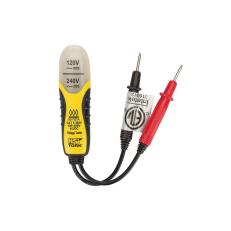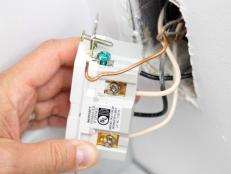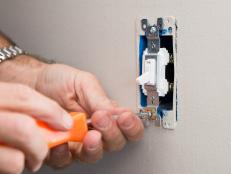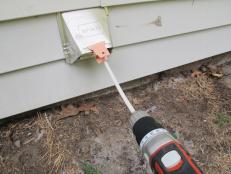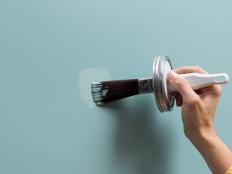How to Test Electrical Receptacles for Grounding
Grounded electrical outlets are important for safety in the home. Learn how you can check your wiring for issues and gain peace of mind.

Electrical circuits often puzzle homeowners, even though it’s pretty easy to replace a standard outlet with a GFCI outlet. Understanding a home wiring system and how negative and positive charges flow through the circuit can make it easier to understand your home's risk for electrical issues. Short-circuiting is a major cause of electrical fires and shock injuries, but it is preventable with proper wiring and grounding.
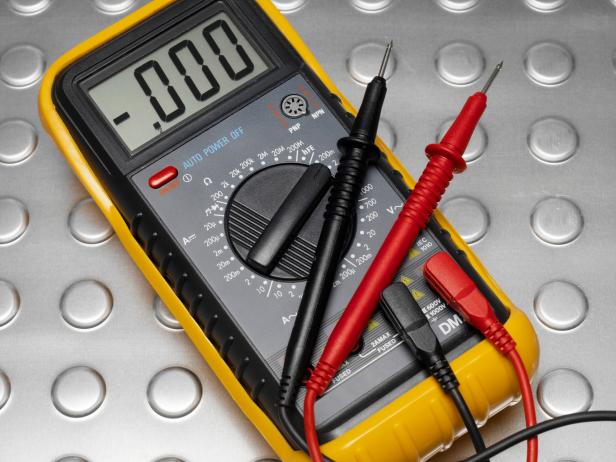
Polka Dot Images
Multimeter
What is Grounding?
Electrical currents run through your home as both negative and positive charges. If you’ve ever taken a close look behind the plate of an electrical outlet, you’ll know that there are black wires (hot lines), white wires (neutral lines) and copper grounding wires.
In a home’s electrical circuit, electricity seeks to discharge its negative energy and return to a state of equilibrium. Normally, the current returns through the neutral wires, but if there’s a breakdown in the circuit or the outlet isn’t grounded, the hot current can attract to other materials, such as wood framing, pipes or flammable materials. When the current transfers to find a shortcut to equilibrium, a properly grounded outlet will absorb the current and safely manage its energy.
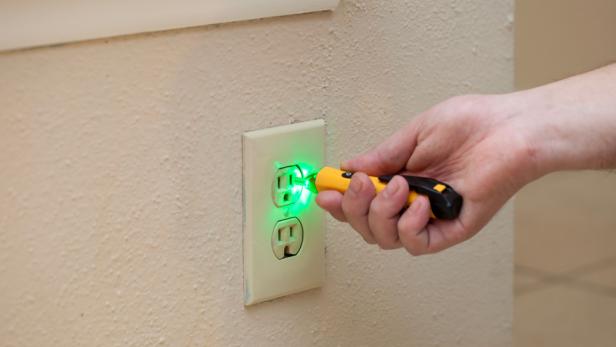
Shutterstock/Moab Republic
Neon circuit tester
Why is Grounding Important for Home Safety?
Grounding systems, as well as circuit breakers and fuses, are all critical for home safety.
The grounding wires provide an alternate “emergency” pathway for electrical current if the circuit is disrupted. Breakdowns in the circuitry can happen for many reasons:
- if an outlet is disrupted and a wire connection is loosened
- if rodents behind a wall chew or break a wire
- if water is splashed on the outlet, or a leak affects the outlet behind the wall
These grounding wires provide a safe path for electricity, should a break in the wiring system cause electricity to jump away from the expected black and white circuit wires.
In modern electrical systems, you’ll find that most outlets are grounded.
- If you look closely at your two-prong outlets, you may notice that one side is slightly longer. These are polarized receptacles and yes, they can still be grounded and tested.
- Any outlet that can accommodate a three-prong plug must be grounded.
While it’s easy to identify which outlets should be grounded, you won’t be able to verify if the outlet was properly grounded without additional testing. Testing your electrical outlets adds peace of mind for many homeowners who are uncertain of the quality of their electrical system. Testing grounding and electrical circuits is also important if you’ve done repair work yourself. So, don't give yourself a pat on the back until the entire system checks out.
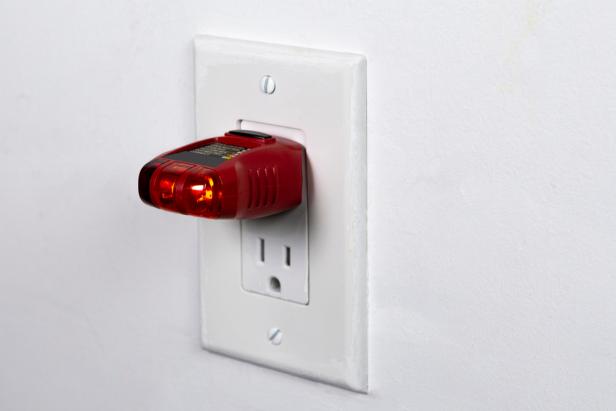
Shutterstock/ben44
Plug-in circuit analyzer
Tools to Test Outlet Grounding
There are several different tools you can use to check the grounding of your electrical outlets. If you find that you cannot detect proper grounding in your home, take steps to make repairs or contact a licensed electrician.
Neon Circuit Tester
A neon circuit tester is one of the most simple tools you can use to test for voltage and check for grounding. Priced at just a few dollars, this tool can help you check the wiring on two-prong outlets and three-prong outlets. Placing the metal probes into the hot and neutral slots on the outlet will illuminate the light in the tester to prove that the circuit is connected properly. If you place the neutral probe on the screw on the front of the faceplate or into the third-prong on a three-prong outlet, a properly grounded outlet will still light up the tester. If the grounding test does not produce a light in the tester, the outlet is not properly grounded.
Plug-In Circuit Analyzers
Plug-in testers are the easiest DIY option for testing the electrical current in an outlet. These testers are inexpensive and plug into any three-prong outlet. Light patterns are used to diagnose any issues including a correctly wired outlet, reversed wires, an open circuit or missing grounding.
Common Multimeter
Professional electricians use multimeters to test voltage and identify circuitry issues. To test for faulty grounding, you’ll find that it’s actually similar to how the neon circuit tester works. Start by turning the multimeter to the highest AC voltage range available. Then, insert the two test probes into the hot and neutral slots of the outlet. If you then pull the black probe out and move it into the third outlet hole, a properly grounded outlet will display the same measurement on the multimeter. If the value changes, the outlet is improperly grounded or has reversed wiring. You can check by reversing the red and black probes, getting a new read, and then moving the black probe to the third-prong opening again. If you get a reading, it’s because the wires are reversed. If there’s no reading, either way, the probes are inserted, you can determine that the outlet has no grounding.








